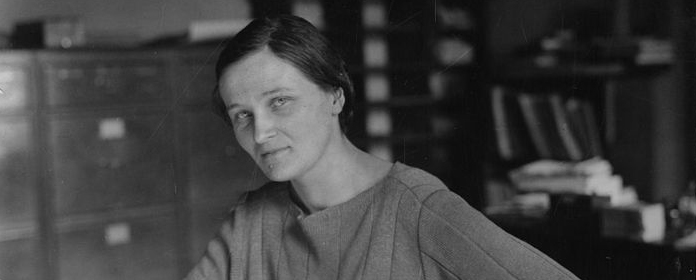Cecilia Payne, the woman who discovered the composition of the stars, protagonist at the Science Museum of the University of Navarre
The project "Women in Science" sample the lives of other women scientists from reference letter such as Alice Catherine Evans, Florence Nightingale or Rachel Carson.

On the occasion of Science Week, the Science Museum of the University of Navarra has produced a new informative video of the collection "Women in Science", whose goal is to show in an attractive way for young people biographies of women scientists from reference letter. This fourth video is dedicated to the life of the British astronomer Cecilia Payne.
Payne studied botany, physics and Chemistry at Cambridge University, but quickly became interested in astronomy. Although she completed her programs of study, she was not given the Degree she was entitled to due to the discrimination women suffered at the time: some universities allowed women, but they were not recognized degree scroll even if they passed all their programs of study. Cambridge, for example, did not recognize women's degrees until 1948.
Moved by her passion for astronomy, she decided to go to America and at the age of 25 she presented her doctoral thesis at Radcliffe University (now part of Harvard University). That work was a real revolution in astronomy. Cecilia came to the conclusion that helium, and especially hydrogen, were the main components present in stars and in the universe. Cecilia's discoveries took a long time to be accepted by the academic community, because some famous astronomers were radically opposed and continued to defend the idea that the composition of the stars was similar to that of the Earth.
In 1934 she married Russian astronomer Sergei Gaposchkin, with whom she observed and analyzed the stars and with whom they jointly published numerous observations. It took many years for Cecilia to be recognized at her University, and it was not until 1956 that she became the first woman associate professor at Harvard. Her great scientific degree program brought her great recognition, such as the naming of Asteroid 2039 after Payne-Gaposchkin.
In addition to being one of the most important figures in astronomy, she was a great fighter against discrimination against women. Cecilia Payne was the one who made possible the change at Harvard University regarding women in science and has been an inspiration for thousands of great women scientists.
The "Women in Science" video project is part of the Science Museum's STEM strategy to make the teaching of science, technology, engineering and mathematics-related subjects more attractive, especially among girls and young women.
